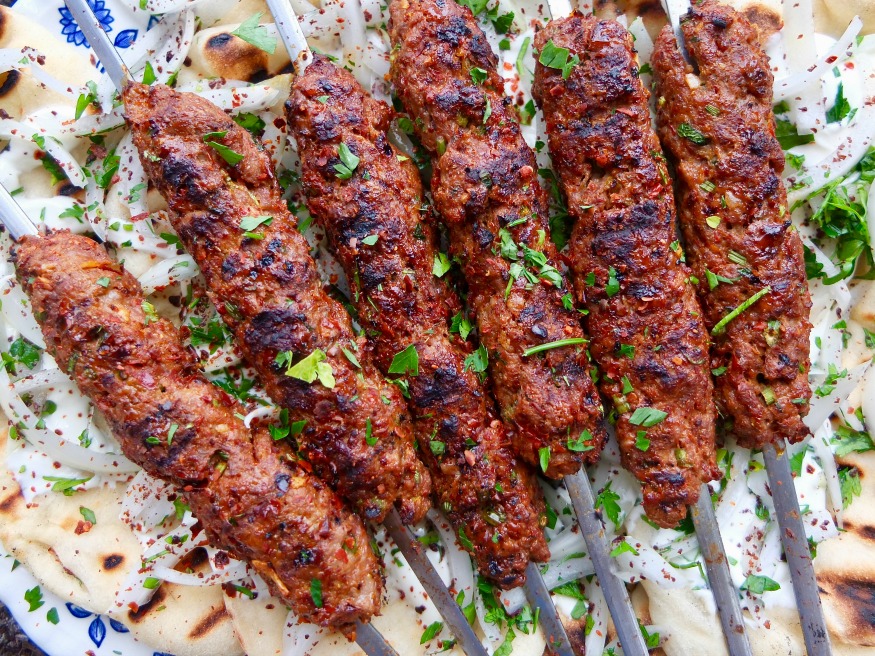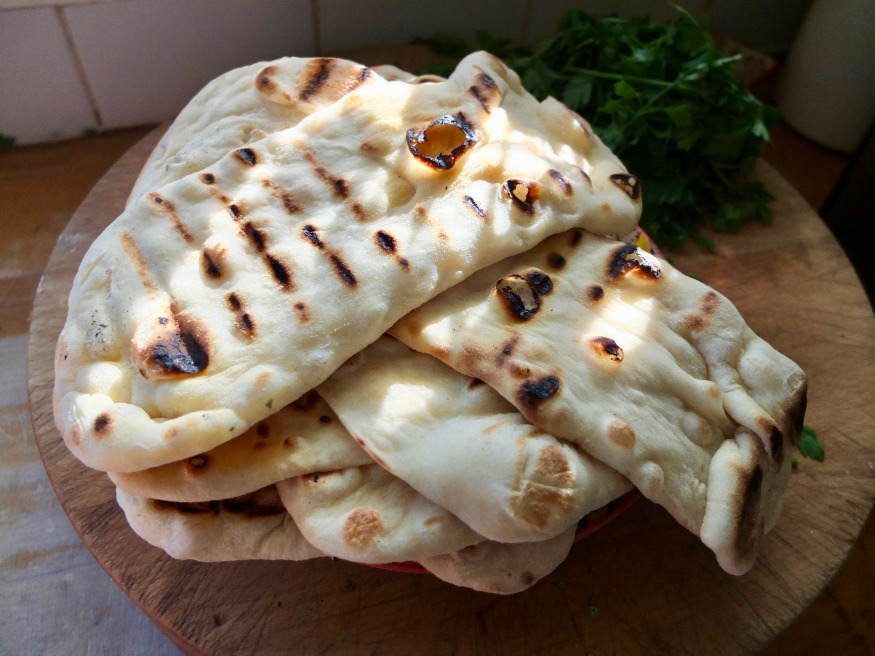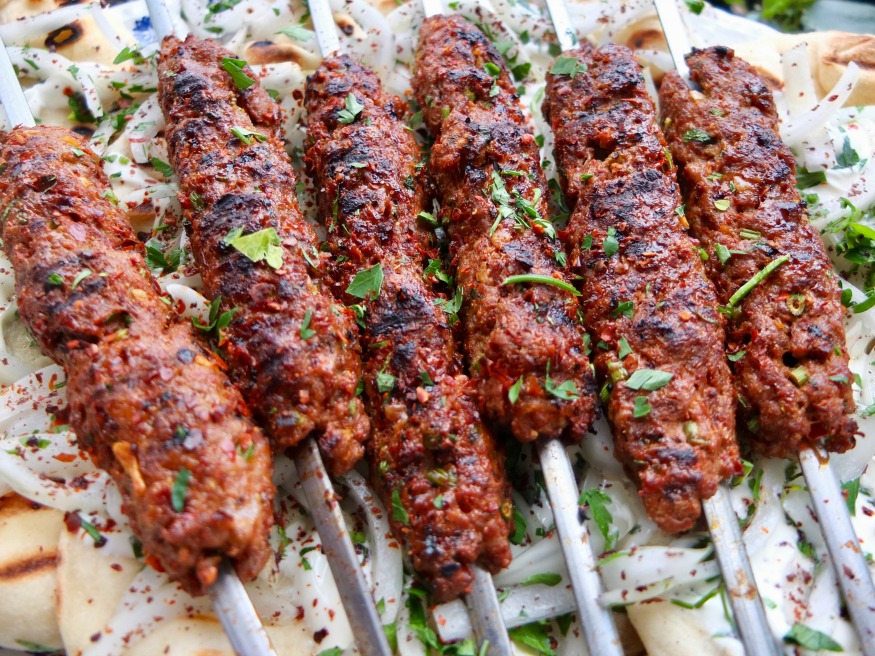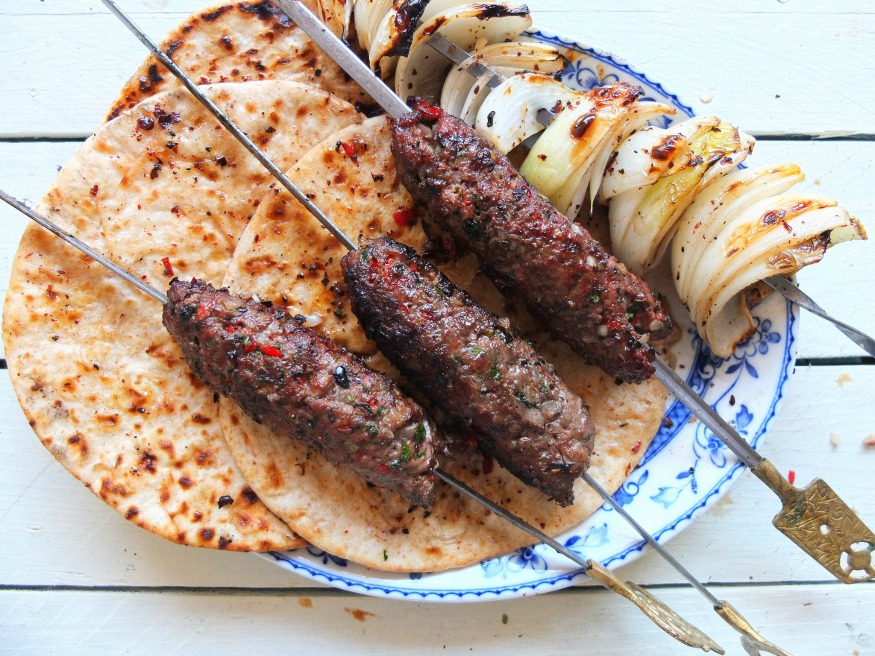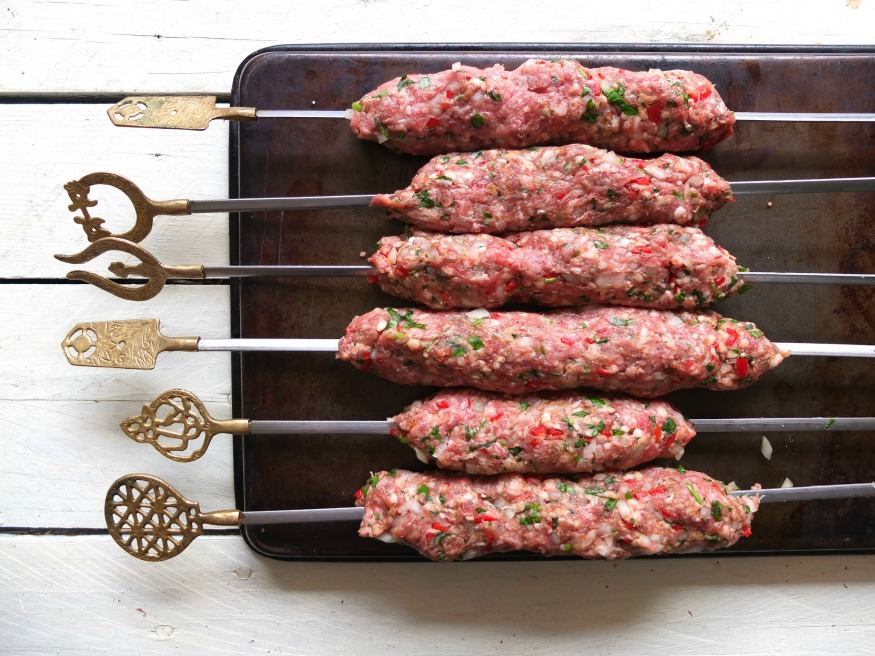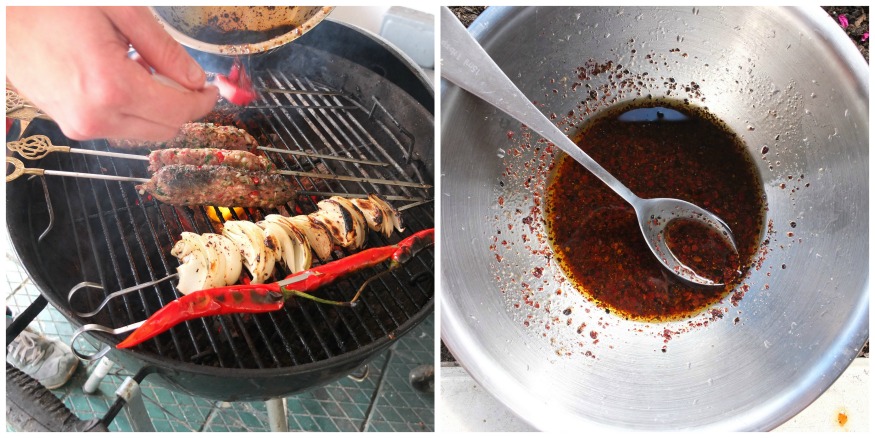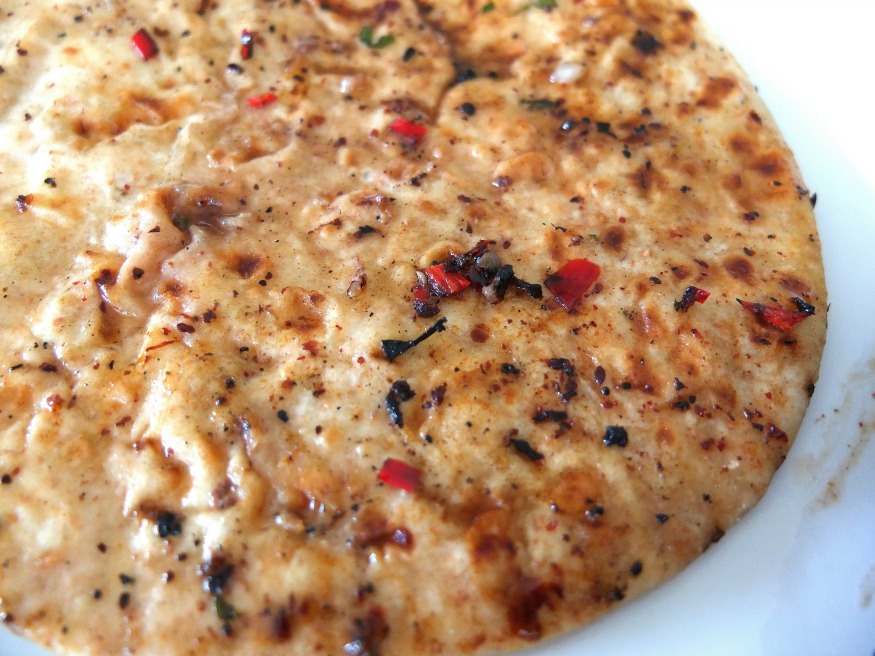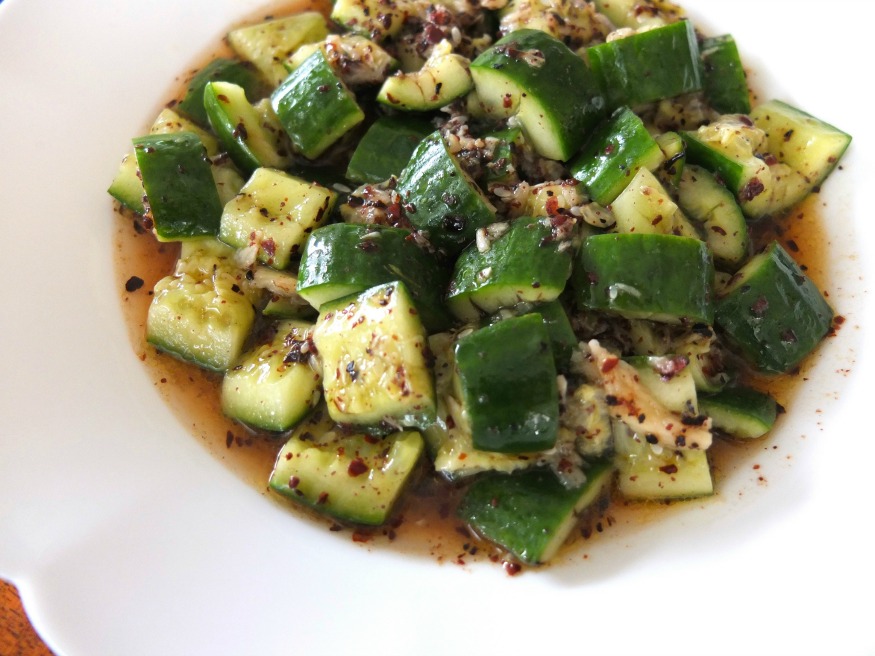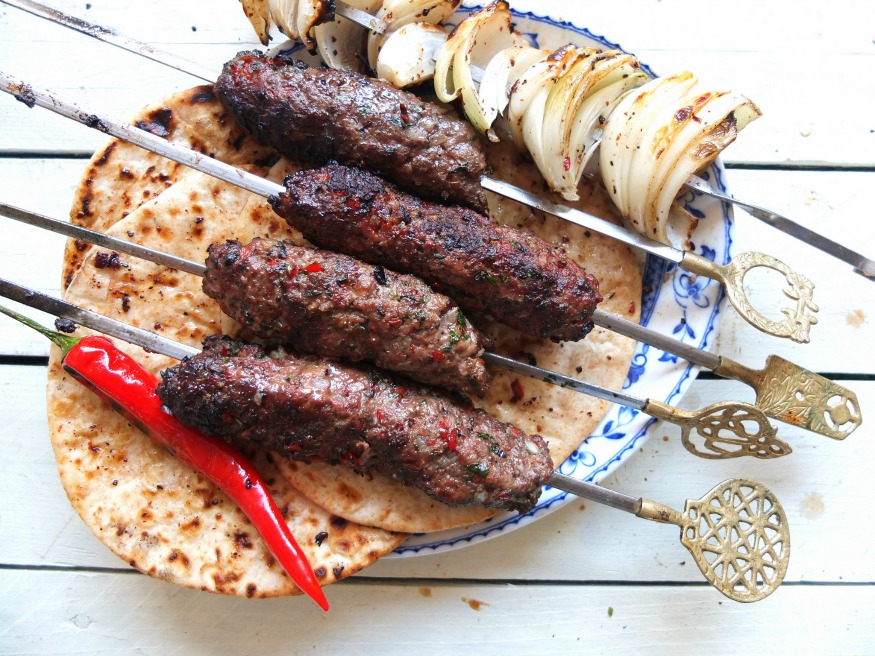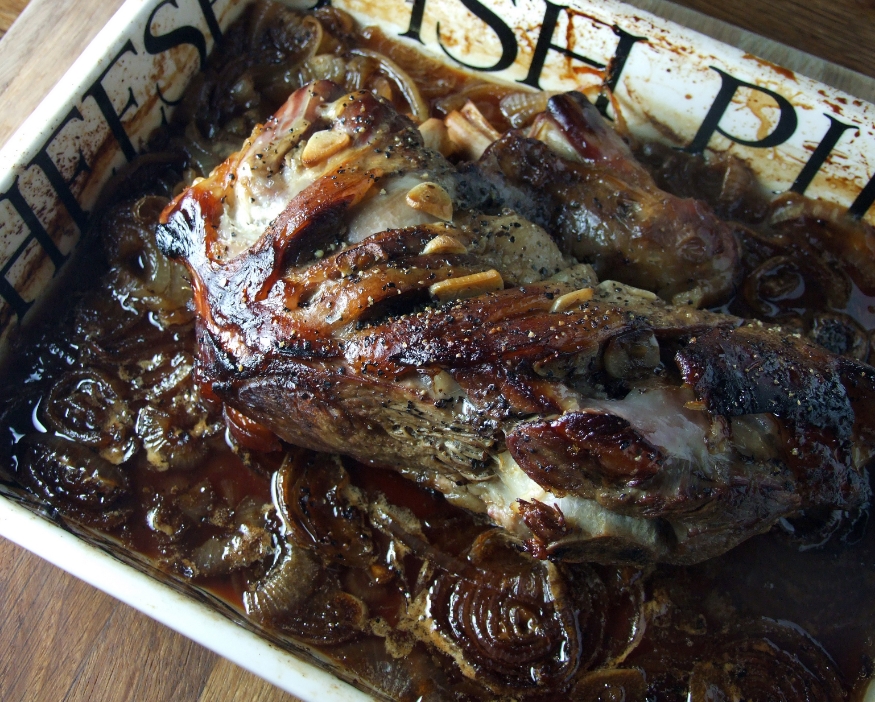
This post is part of a paid partnership with PGI Welsh Lamb
‘Yeah, the castle came with the farm’ Will Pritchard casually explains as we stand under the shadow of what’s left of Weobley, a 14th Century fortified manor house on the Gower Peninsula. Beyond it lies the salt marsh, an intertidal zone between the sea and the land, on which sheep roam freely, bred for their tender meat. The marsh is stunning. Behind us lies a streamlined with whispering rushes, beyond are mudflats, broken by pockets of salt-tolerant herbs and grasses, on which the sheep graze.
We arrive as the tide is coming in, so the sheep must be moved to higher ground, and they’ve gathered into small groups to head upland, sheepdogs wheeling behind them. Will and his family have been farming this 4000-acre piece of land for 15 years and have around 1200 sheep. His brother, zooming around on a quad bike, must stick to the well-worn tracks as some bombs from World War II still lurk silently unexploded beneath the surface. Don’t worry, sheep are a lot lighter than quad bikes. The breeds are nimble, able to skip their way around the winding streams and inlets.
Saltmarsh lamb is prized as the sheep are said to benefit from grazing on herbs that grow in the unique ecosystem. It’s popular in France, apparently, but the British have only just begun to appreciate it in recent years. The meat is lighter in colour, leaner and more tender than regular lamb.
The season runs from August right until Christmas and that goes for PGI Welsh Lamb in general not just that from the salt marsh. Wales has a unique climate – lots of rain means lots of grass – and high land is perfect for animals which need space to graze. The production is also governed by strict rules thanks to the lamb’s PGI status (Protected Geographical Indication) which cover traceability, transport, slaughter. The majority of farms are family-owned small holdings with a historical legacy of livestock farming.
You all know I’m a huge fan of lamb, not least because I think the meat is perfect for the barbecue with chops, shoulder, breast and neck fillet all working well. I wanted to make some kebabs with minced lamb (Me? Spiced lamb kebabs?) but this time wrap them in caul fat. What is caul fat? Well, it’s the lining of the sheep’s stomach – a beautiful, white, web-like structure which is used to make faggots, among other things. The fat bastes the meat as it’s cooking and brings even more lamby flavour.
I’ve based the style of kebab on the Cypriot sheftalia, which is a very simply flavoured ‘sausage’ made with parsley, onion and pepper. I kept to this simple recipe, adding just a touch of cinnamon because it brings out the sweetness of lamb. And yes, I had to make some laver flatbreads too because honestly, what is life without grilled lamb, yoghurt, salad and fresh fluffy flatbreads. Miserable indeed.
PGI Welsh Lamb Sheftalia with Laver Flatbreads Recipe
Makes approx 14 kebabs
1kg minced PGI Welsh Lamb (PGI lamb is available from most supermarkets but a handy map of butchers is available here)
1 medium onion, finely diced
6 cloves garlic, crushed or grated
3 tablespoons parsley stalks, finely chopped
Black pepper, around 1 teaspoon, freshly ground
¾ teaspoon ground cinnamon
Salt
2 large pieces caul fat, for wrapping
In a large bowl combine all the ingredients and use your hands to mix well. Heat a small frying pan and fry a teaspoon of the mixture to taste and check for seasoning. Adjust if necessary.
Divide into 14 balls and shape each into a sausage. Lay the caul fat out on a flat surface and place a sausage onto it. The thinner pieces of caul are better for this than the thick parts, so aim to use up the thin parts first. Wrap around the sausage and cut away any excess.
To cook, preheat the barbecue for indirect cooking. It’s important to do this because the caul fat will melt on the grill and it will cause flare-ups.
Once the coals are covered in a layer of ash and the flames have died down, you’re ready to cook. Place the kebabs on the side without coals, and keep them well away until the fat has rendered from all sides of the kebab. Once it has, you can move them to the direct heat part to crisp them up.
Mine took around 20 minutes to cook but this will depend on the thickness of your kebabs.
Serve with the flatbreads, salad, yoghurt and hot sauce.
For the flatbreads:
150g laver
200ml warm water
500g strong white bread flour
30ml olive oil
2 teaspoons salt
1 x 7g sachet dried yeast
Mix everything together in a bowl and knead on a lightly floured surface for a few minutes, until smooth and springy. You want a nice, smooth, springy dough.
Leave the dough in a warm place for an hour or so until it has roughly doubled in size.
Knockback the dough and divide into 8 balls for larger breads or 12 for small.
Roll the dough balls flat and cook for 2-3 minutes in a properly hot, dry pan (I use a cast iron griddle) until a little charred on each side. They will start to puff up when ready. Keep them warm inside a clean tea towel while you cook the rest.
For the salad:
1 large onion, sliced and soaked in iced water while you prep the other veg
2 tomatoes, sliced
2 large handfuls parsley leaves
Juice half a lemon
2 tablespoons olive oil
Combine all the ingredients and season with salt and pepper.
